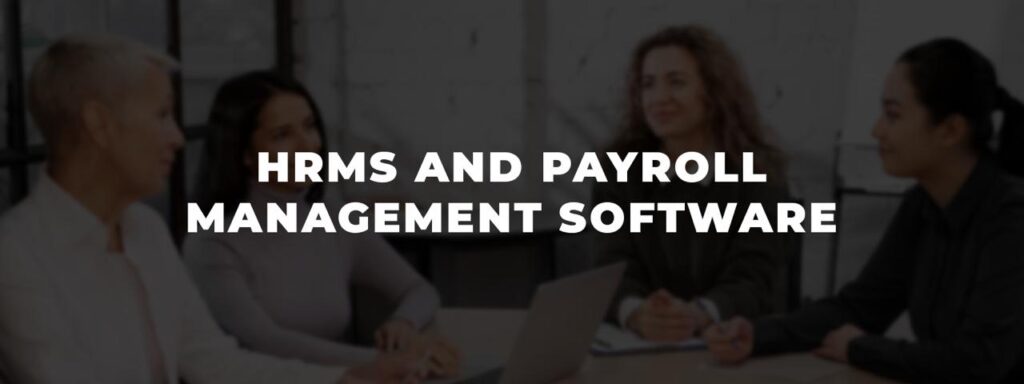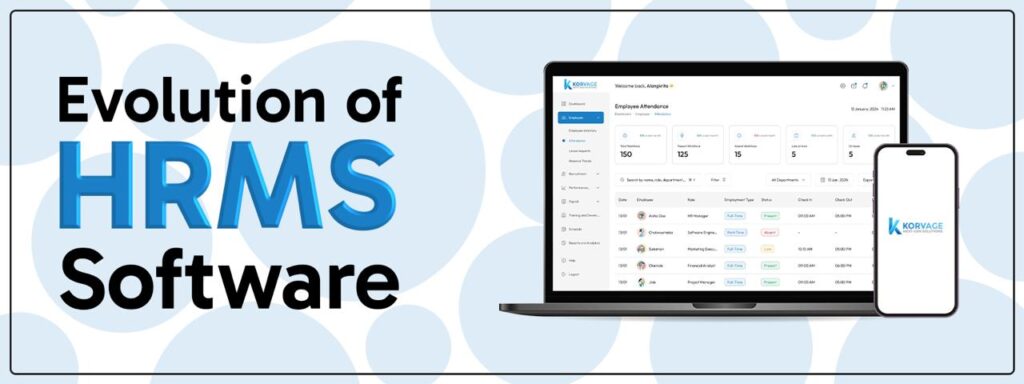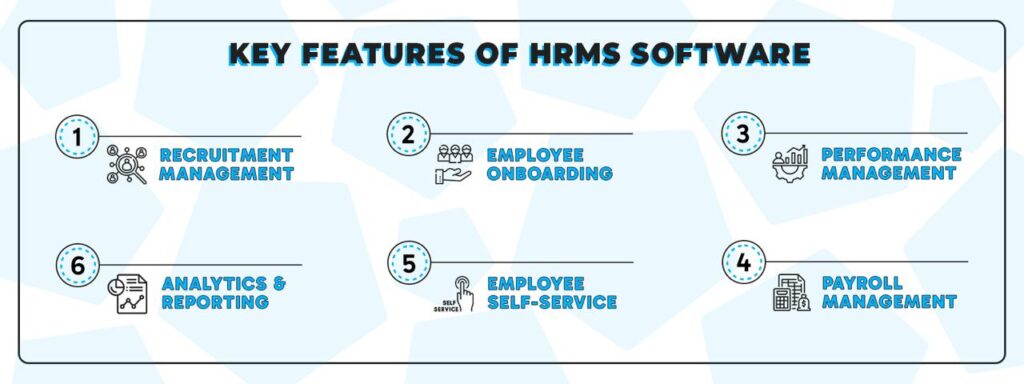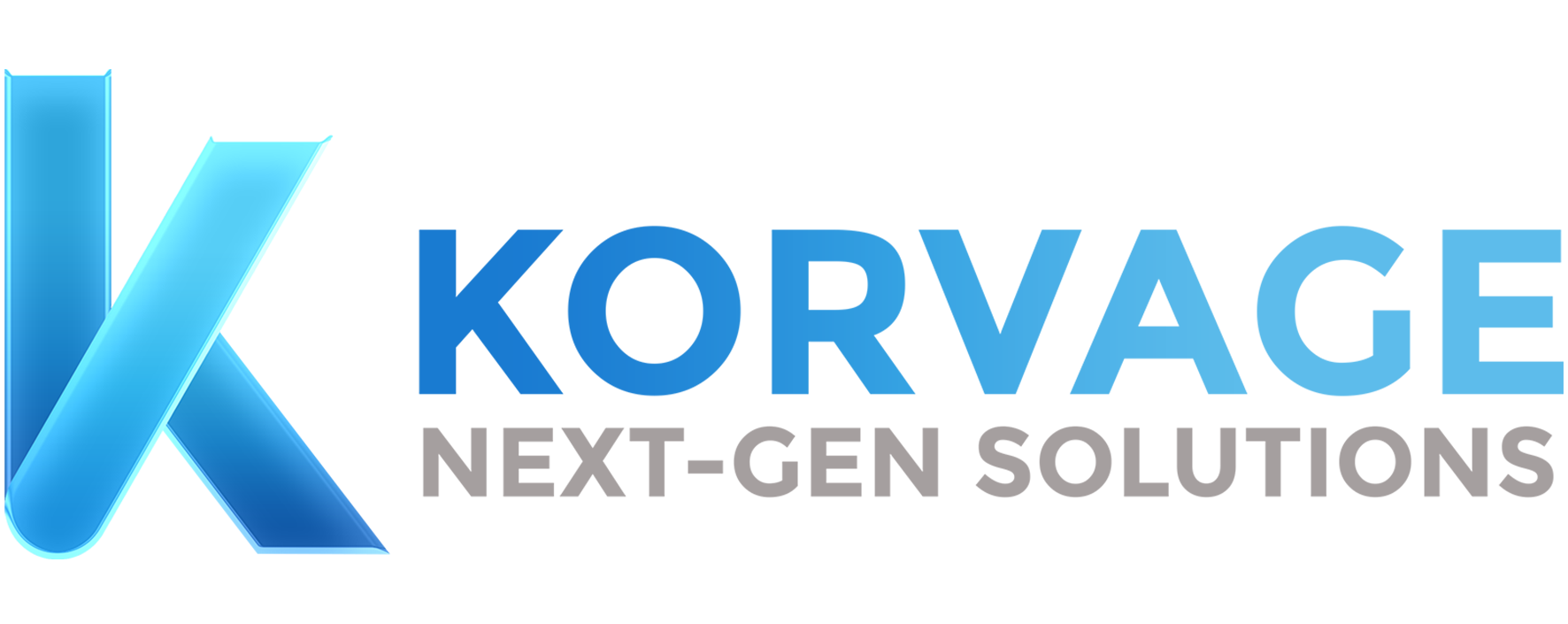Secrets About HRMS & Payroll Management Software

Struggling to manage human resources and payroll without dedicated software can be a daunting task for any business. Manual processes often lead to errors, delays, and inefficiencies, causing frustration for both employees and managers. From tracking attendance to calculating salaries and managing benefits, the workload can quickly become overwhelming. However, implementing a comprehensive HRMS & payroll management software can alleviate these challenges. With automated features and streamlined workflows, businesses can save time, reduce errors, and improve overall efficiency. From simplifying administrative tasks to ensuring compliance with regulations, HRMS and payroll software are indispensable tools for modern businesses.
The Evolutions Of HRMS Software

The HR world is going digital, just like everything else around us. In the past few years, technology has changed at a quick pace, and this has certainly had an impact on human resource management. In other words, artificial intelligence is currently being discussed in relation to human resources. Yes, we have surely come a long way from keeping an Excel sheet for staff management to utilizing chatbots to help employers retain talent, but I find it interesting to wonder how we got here.
1970s –
In the early 1970s SAP was founded and introduced a module that made staff management inside a business easier and more efficient. It was the first system to take the place of the pen and paper approach to staff tracking and management. This was the original HR software, and it was nothing like the HR software of today. Because it was based on mainframe computers and green screen technology, HR systems were mostly used for payroll. Small and medium-sized firms were not able to benefit from this technological progress because SAP was primarily an enterprise level solution.
After the Introduction of AI –
The next significant turning point in the development of HR technology was the rise to prominence of artificial intelligence. The emergence of artificial intelligence presented a significant opportunity for HR product architects worldwide to address extremely complicated problems that existed in the HR industry.
There are several areas in HR where AI seems appropriate. One of the main areas where artificial intelligence might be applied widely is employee retention. Hiring talent was one of the other key areas where the architects believed AI may be the greatest answer.
Artificial intelligence is greatly helping in a number of crucial areas, including recruitment. It has eliminated the risk of biased hiring and helped with relationship-building, job-advertising, and writing.
Key Features of Modern HRMS Software

Human Resource Management Systems have evolved beyond basic payroll processing. Today’s modern HRMS & payroll management software offers a comprehensive suite of features designed to streamline HR processes, empower employees, and improve overall business efficiency. Here’s a glimpse into some key features –
- Centralized Employee Database – Modern HRMS acts as a central hub for storing and managing all your employee information, from contact details and job titles to performance records and benefits selections. This eliminates data silos and ensures everyone in your organization has access to the most up-to-date employee information.
- Performance Management and Development – HRMS software allows you to set clear performance goals for employees, track progress, and provide ongoing feedback. It can also facilitate self-service options for employees to access their performance reviews and development plans.
- Learning Management System (LMS) – Many HRMS platforms provide integrated LMS which act as a centralized hub for employee training and development. You can upload training materials, create learning paths, track employee progress, and assess training effectiveness.
- Applicant Tracking System (ATS) – An integrated ATS within the HRMS software simplifies the recruitment process. You can post jobs, attract qualified candidates, manage applications, and schedule interviews efficiently. The ATS helps automate tasks like filtering resumes and sending interview notifications, saving HR teams valuable time.
- Mobile Accessibility – An era of mobile work would begin, once all the employers are accessible from any location with Wi-Fi. It is very crucial that your HRMS work with tablets and smartphones so that employees and HR professionals can do critical functions with their mobile devices.
- Employee Self-Service (ESS) – An ESS portal empowers employees to manage their own HR information. They can access pay stubs, update personal details, request time off, and view benefits information. This self-service approach reduces administrative burdens on the HR team and promotes employee engagement.
Famous Case Study Of Successful Implementation of HRMS & Payroll Software
Canada’s federal government payroll system
The Phoenix pay system, implemented by the Government of Canada, has faced significant challenges, resulting in widespread issues with payroll for public servants and student workers. The system, intended to save money, instead led to underpayment, overpayment, or non-payment for more than 80,000 employees.
Factors for Failure – Multiple factors contributed to the failure, including process errors, data issues and insufficient IT talent. Lack of training and complex government rules added to the problems. The aftermath of the debacle continues, with executives receiving hefty performance pay while thousands of employees await payroll adjustments.
The government underestimated the time needed for people to adapt to the new system, leading to prolonged issues. The misalignment of resources and inadequate training resulted in severe consequences, including financial hardships for employees and stress-related leave.
Conclusion – A responsible approach to IT change management involves running the new and old systems simultaneously, along with thorough testing and user training. Neglecting these steps can lead to costly failures, as seen with the Phoenix system.
Metrics specializes in systems transitions and emphasizes the importance of proper testing and training to avoid such disasters. Investing upfront in innovation strategy and IT talent can prevent the costly aftermath of a poorly executed system rollout.
This case underscores the importance of strategic planning and adequate preparation before implementing new systems. Metrics offers expertise in navigating such transitions and can assist organizations in avoiding similar pitfalls.
How To Choose The Right HRMS & Payroll Management Software
Choosing the right HRMS & Payroll management software is crucial for streamlining your HR processes and ensuring smooth business operations. Here’s a simple 4 step process that you need to follow to choose the perfect fit for your organization –
1. Define Your Needs –
- Company Size & Structure: Consider the number of employees, departments and business complexity. A small startup might have different needs than a large corporation.
- Features Required: Identify the core HR functionalities you need in a software, such as payroll processing, employee onboarding, performance management or learning management.
- Budget: Determine your budget you will be investing in the software, including licensing fees, implementation costs and ongoing maintenance.
2. Research and Evaluate Solutions:
- Shortlist Vendors: Based on your needs and budget, shortlist HRMS & payroll software vendors providing features that align with your requirements. Read online reviews, case studies and compare vendor offerings.
- Free Trials & Demos: Many vendors offer free trials or demos. Take advantage of these to experience the software firsthand and assess its user-friendliness for both HR staff and employees.
3. Key Considerations for Selection:
- Scalability: Choose software that can grow with your company and accommodate future employee additions or department expansions.
- Security and Compliance: Data security is paramount. Verify that the software offers robust security features and complies with relevant data privacy regulations.
- Implementation & Support: Check the vendor’s implementation process and ongoing support options. Will they help you migrate data, train your staff, and provide ongoing customer service?
4. Make the Final Decision:
- Gather Feedback: Get input from your HR team and other key stakeholders who will be using the software. Their feedback on usability and functionality can be valuable.
- Negotiate Contract: Negotiate the contract terms with the chosen vendor, ensuring pricing details, implementation timelines, and support options are clearly defined.
WRAP –
Choosing the right HRMS & Payroll software requires planning and consideration, but the payoff is significant. Streamlined workflows, reduced paperwork, improved employee engagement, and accurate payroll processing are just some of the benefits you can expect. By following this guide you can find a solution that streamlines your HR processes, empowers employees and contributes to the overall success of your organization.
